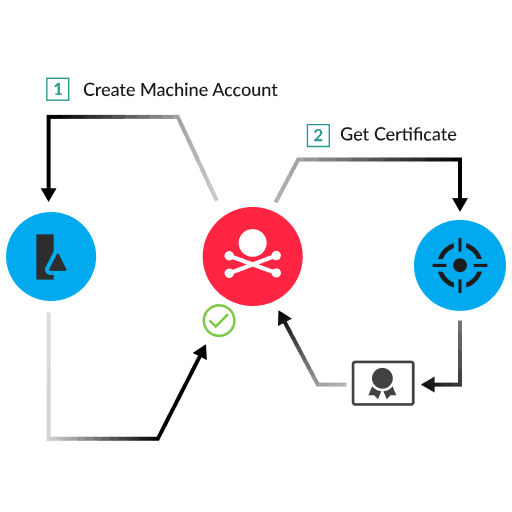- Platform
- Solutions
- Modern NDR
- Resources
- Company
Platform
Modern NDR
Resources
DETECTION OVERVIEW
Risk Factors
This vulnerability is well known and public exploit code is available. An attacker with LDAP access to a domain controller (DC) and the ability to create a certificate through Active Directory Certificate Services (AD CS) can exploit this vulnerability. A successful exploit creates a privilege escalation path that can grant domain administrator privileges to an attacker.
Kill Chain

AD Domain Services (AD DS) on a domain controller (DC) allows any domain user to create a machine account with dnsHostName and sAMAccountName properties. These values should be the same. AD DS has a vulnerability that enables an attacker to create or modify a machine account to include different dnsHostName and sAMAccountName properties. AD CS then issues a certificate (essentially a proof of identity) based on the dnsHostName property.
The following diagram shows one scenario for achieving privilege escalation by exploiting this vulnerability. First, the attacker sends a specially designed LDAP request to a DC to create a machine account with a dnsHostName property different from the sAMaccount property. For example, the dnsHostName property might match the dnsHostName of a DC (1). Next, the attacker sends a certificate request to AD CS, which issues a certificate to the attacker that identifies the new account as a DC (2). With this certificate, the attacker can successfully submit Kerberos authentication requests that give the attacker DC privileges.
